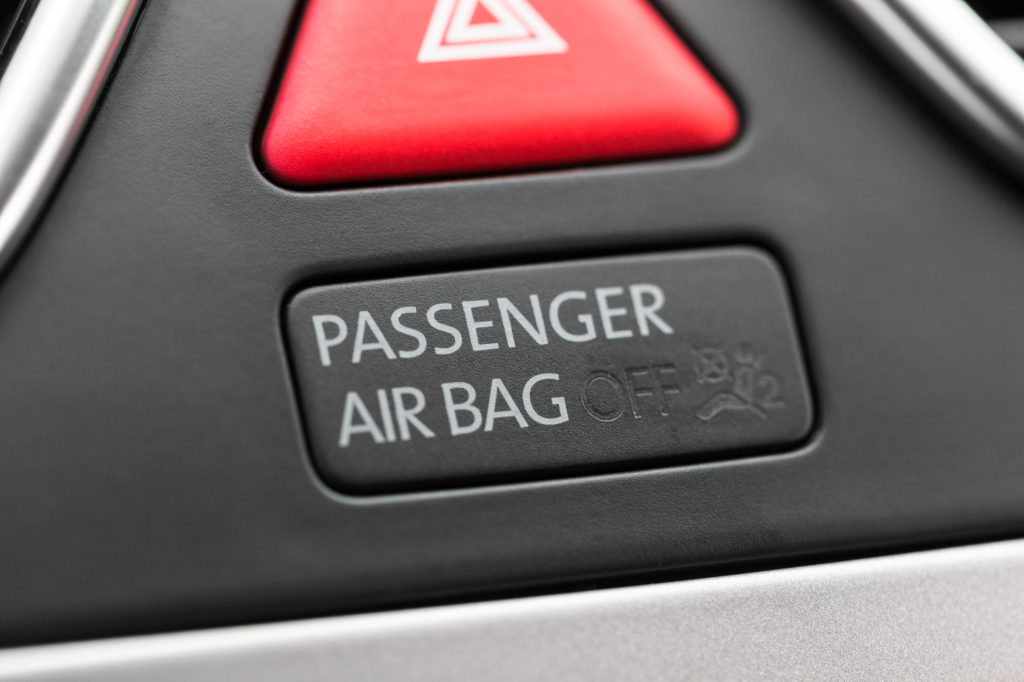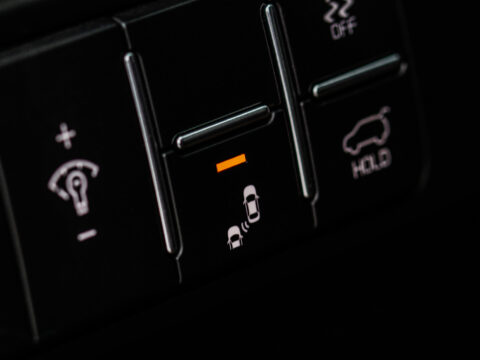If you stumbled across this article, you’re probably sitting vexed behind your dash trying to shut off that lingering airbag light. Much like any other dashboard indicator, a persistent airbag light can stem from many sources varying from downright headache-inducing to a quick thirty-second fix.

Regardless of the severity, this article will address some of the most common sources of this problem and provide a step-by-step guide for resetting the airbag light once you have fixed the underlying issue.
Contents
What Does the Airbag Light Look Like?
Car manufacturers symbolize the airbag light in a few different ways, depending on the make and model. They usually depict it in red as a seat with a deployed airbag, but some older vehicles can display it emboldened in red as “AIR BAG.”
Once you have confirmed that you are definitely dealing with the airbag light, you can now begin troubleshooting.
To properly diagnose your vehicle’s airbag indicator, you’ll first need to read the trouble code either through an OBD-II scanner or by taking it to a local parts store such as AutoZone or O’Reilly’s, where they’ll be able to perform a diagnosis free of charge. Upon fixing the problem, you can use the same scanner to reset your airbag light, or they can reset it at the parts store.
What Would Cause an Airbag Light To Come On?
There are a handful of reasons your airbag light may be on. Defective sensors, defective springs, or defective airbags may all be potential causes, or it can be as simple an issue as an unfastened seatbelt.
1. Defective or Activated Seat Sensor
A common source of a persisting airbag light is a defective or activated seat sensor. Maybe you have a heavy object occupying one of the passenger seats– believe it or not, this can accidentally trip the sensors into activating the airbag light. If you remove the heavy object and the airbag light persists, this could point to a defective seat sensor.
If you have a defective seat sensor, leave the belt clicked until you can get it serviced for a temporary fix.
2. Defective or Broken Clock Spring
A very prevalent and, regrettably, costly source of a flashing airbag light is a broken clock spring. This can net you up to around $300 just for the parts, and likely an extra $100 for the service. If you are looking to save on labor costs, there is a way to replace it yourself with the right tools and know-how.
Replacing your broken clock spring requires specific tools that are likely unavailable to the average car owner. If you plan on trying to replace it yourself, you will need a steering wheel puller in combination with a relatively large socket. If these tools are not readily available, you can typically find them for rent at a local parts store.
3. Seat Belts Not Fastened
Most modern vehicles have a function that automatically disables your airbag while unbuckled, so riding without a seatbelt can and will trigger the airbag light.
If you buckle up and the airbag light remains active, this could imply one of two things – either the seatbelt sensor is defective or bits of debris are wedged in the buckle, causing it not to register. Spare change and small bits of trash are the most common culprits of this issue.
Before getting it serviced, peek inside the buckle and look for any debris. If there is nothing noticeably blocking the sensor, it may be defective and in need of replacement. Replacements for this can cost upwards of $200 if they built the sensor directly into the seatbelt, but it is typically much less expensive if they can replace it separately.
4. Defective Airbag Sensors
Manufacturers typically design vehicles with two closed sensors linked to the airbag to protect the user in case one of them fails. Thankfully, this means your airbag won’t deploy if one of them becomes defective; however, it will disable the airbags entirely and leave you with the indicator on your dash.
If one of your airbag sensors is defective, that is a major safety concern, so service it as soon as possible. The cost of repairing your airbag sensor can range from around $250 to $350, and unless you have a solid understanding of electrical components, leave this one up to the professionals.
5. Defective Airbag
A defective airbag is generally expensive to fix. The price of a replacement airbag can range from around $200 to well over $1000, and servicing your vehicle can cost just as much depending on which bag is defective.
The labor cost varies because it may be more difficult to swap out parts in one seat than another.
Thankfully, a defective airbag is a rare occurrence, as manufacturers attempt to design airbags to be incredibly long-lasting and effective.
If you are unfortunate enough to experience this issue, always try to look for product recalls. Car manufacturers frequently recall airbags, and yours may be among them. If you registered your vehicle under your name at the DMV, you should automatically receive email updates about product recalls.
If not, you can always enter your VIN on the National Highway and Traffic Safety Administration’s website to view any recalls pertaining to your vehicle.

How to Reset Your Airbag Light
Ready to troubleshoot at home? Here’s what you need.
Equipment Needed
Occasionally, the airbag light may turn off automatically once the issue is resolved. For every other occasion, you will need an OBD-II scanner to scan for trouble codes which, upon clearing these codes, the airbag light should disappear.
Step 1 – Ensure Issue Has Been Resolved
Before attempting to reset your airbag light, you must ensure that the problem has been 100% resolved. If you disable the airbag light while the problem persists, this might deploy the airbags prematurely or disable the airbags in the event of an accident.
Step 2 – Review All Trouble Codes
Hook up the OBD-II scanner to your vehicle and carefully review all trouble codes, ensuring they are all properly addressed before clearing them.
Step 3 – Clear Trouble Codes
Clear the list of trouble codes. After this, the airbag light should subside.
Step 4 – Go for a Test Drive
Restart the vehicle and go for a test drive. If the airbag light returns at any point, reread the codes and repeat the troubleshooting procedure from the beginning.
Airbag Light FAQs
Still have questions? Check below for additional information.
Is it safe to drive with the airbag light on?
Anytime your airbag light activates, it means it is disabled for as long as that indicator remains on the dash. This means that in the event of an accident your airbag would not deploy, so it is highly dangerous to drive while the light remains active.
Will my airbag deploy if the light is on?
No. This is both a safety concern and a safety feature, as a defective airbag could be fatal if deployed outside the event of an accident. The airbags are disabled by default while the light is on for this purpose.
How much does it cost to fix my airbag light?
The cost of fixing your airbag light can range from nothing to several thousands of dollars, and this all depends on the source.
Will disconnecting my battery reset the airbag light?
Airbags usually come with backup batteries separate from the main car battery, which prevents the light from resetting upon a battery reset. The best and often the only option for resetting the airbag light is through the use of an OBD-II scanner.














